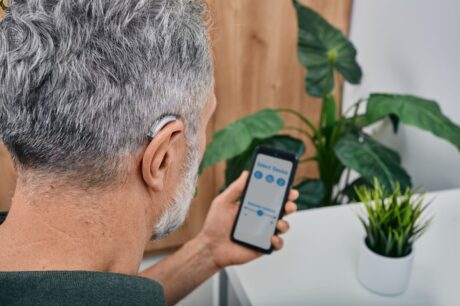Tympanometry is a test that measures the eardrum’s movement in response to changes in air pressure. The test evaluates the middle ear’s function and detects conditions such as ear infections, fluid in the middle ear, and eardrum perforations.
It is typically performed by an audiologist using a device called a tympanometer, which creates pressure changes in the ear canal and measures the resulting movement of the eardrum. The test results are typically displayed on a graph called a tympanogram, which can be used to diagnose various middle ear conditions. Tympanometry is a safe and non-invasive test and can be performed on people of all ages.
Some signs that a person may need tympanometry include:
- Difficulty in hearing
- Feeling fullness or pressure in the ears
- Recurrent ear infections
- Tinnitus (ringing in the ears)
A healthcare provider may also recommend tympanometry as part of a routine hearing test or an evaluation for a specific ear condition.
Tympanometry is a diagnostic test used to assess the middle ear’s condition and the eardrum’s mobility (tympanic membrane).
Here are answers to some frequently asked questions about tympanometry:
Q: What does a tympanometry test involve?
A: A tympanometry test involves using a small probe that is inserted into the ear canal. The probe sends sound waves and measures how the eardrum responds to changes in air pressure.
Q: What can a tympanometry test detect?
A: A tympanometry test can detect problems with the eardrum or middle ear, such as fluid in the middle ear (otitis media), a perforated eardrum, or a buildup of earwax.
Q: Is tympanometry painful?
A: Tympanometry is not painful. Some people may feel a slight discomfort or pressure in the ear during the test, but it should not be painful.
Q: What should I expect during a tympanometry test?
A: During a tympanometry test, you will be seated, and the healthcare professional will place the probe in your ear. You may be asked to hold your nose and swallow or to blow your nose to help change the pressure in your middle ear. The test is typically quick and takes only a few minutes to complete.
Q: How often should one get a tympanometry test done?
A: The frequency of tympanometry testing is usually determined by a healthcare professional based on individual needs and symptoms. It may be done as a routine check-up in some instances or as needed when someone is experiencing symptoms of middle ear issues.
You don’t need to panic if your General Practitioner recommends a tympanometry test. In that case, you should make an appointment with an audiologist to receive proper advice on treatment options. If you have any questions, want to find out more, or book a consultation, get in touch with The Listening Lab Singapore.
About The Listening Lab
Listening Lab is a home-grown company whose mission is to help our clients restore their hearing to enjoy the life that they desire. Experiencing hearing loss can be detrimental to one’s quality of life. Hence we commit to providing high-quality hearing solutions.
Our hearing solutions include hearing tests and treatment and prescribing hearing aids. Clients may come to get their hearing checked, and we will assess whether hearing aids are required.
If hearing aids are required, clients can choose from a variety of the best hearing aid brands we provide. Each of the products offers unique features that complement daily use and perform well in helping our clients enjoy the life that they desire.


















